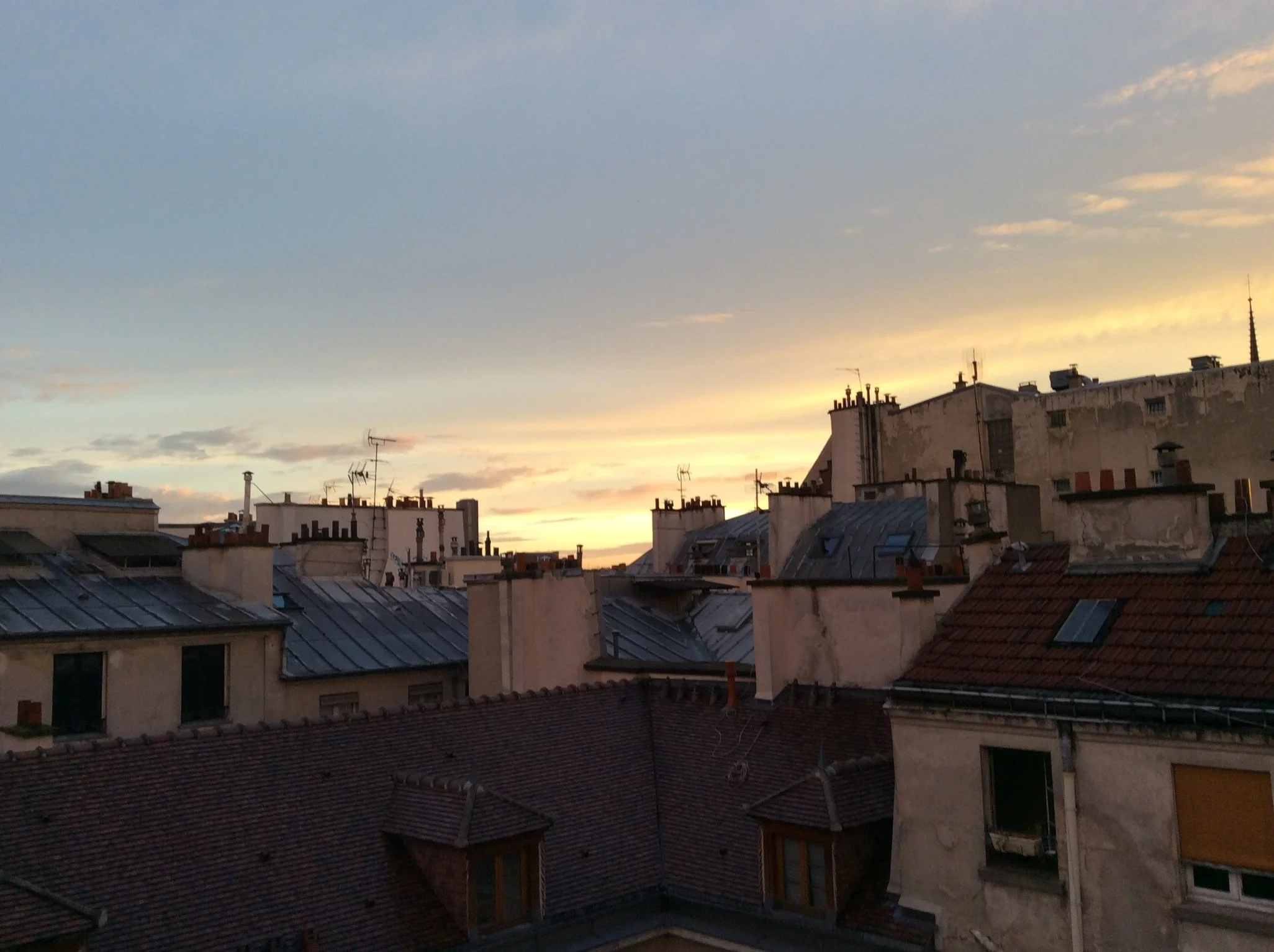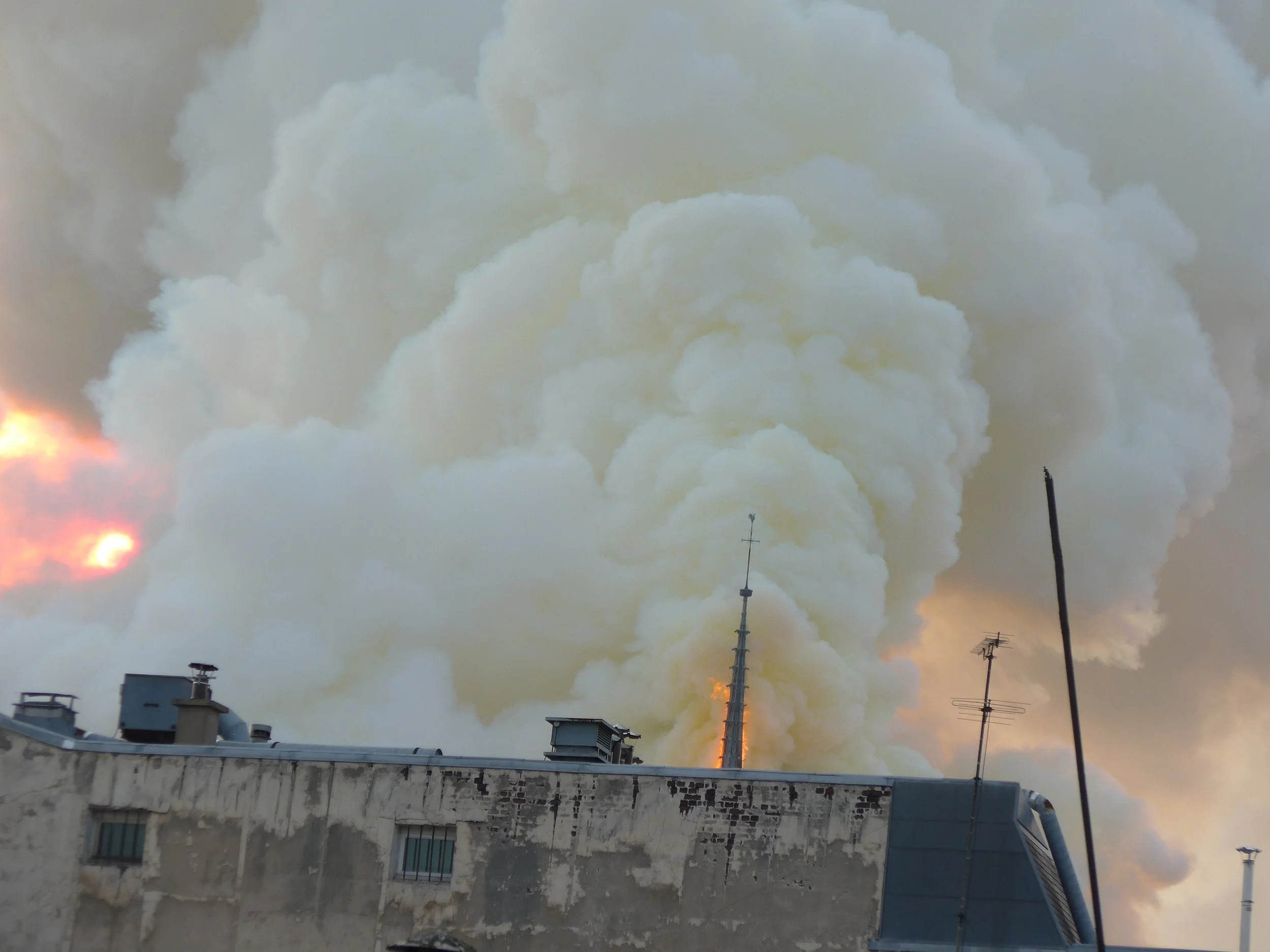Notre Dame a year after the fire
Just a year after the fire that nearly destroyed Notre Dame, the cathedral is once again at the heart of a far bigger worldwide disaster. What can we learn about life after the Covid19 pandemic from the fire that almost destroyed it - but didn't?
I live on the Ile St Louis, the little island connected by the Pont St Louis to the tip of the bigger Ile de la Cité on which Notre Dame is built. From this footbridge there is an excellent view of the Seine, dominated by the lovely apse of the cathedral. It is a favoured backdrop for films set in Paris, for wedding photographers and for tourists, with rival musicians and street performers often occupying both ends at weekends.
Of the four bridges connecting the Ile St Louis to the mainland, the Pont St Louis is the one closest to my studio, so I pass Notre Dame almost every day. In 28 years I think I have been inside the cathedral itself only four times. But every day I have leaned out from the seclusion of my top floor window to see the tip of its spire, which is at the same height. In fact, when I first moved there I actually thought the spire was a tv aerial, as the rest of the cathedral is completely hidden by houses. Once I realised what it was, it became a personal landmark.
At 7.15 pm on 15 April last year a neighbour phoned to tell me that Notre Dame was on fire. I didn’t believe her, but went to the window to check. I saw a poisonous yellow-grey pillar of smoke belching rapidly upwards into the blue sky of that spring evening, with the spire - my spire - briefly outlined by flames.
I gaped in disbelief and frantically took a series of photos. Then the spire was hidden by smoke and when the smoke cleared not long afterwards it had gone forever. I felt exactly as if I had lost a friend.
Over the next few days access to the Pont St Louis was barred. I asked the policeman on duty when it would re-open and then to my horror realised that I was about to cry. He said, ‘On a tous la même réaction’ and patted my arm. Two nights later I joined a crowd of silent Parisians on the Ile St Louis listening to a choir singing hymns opposite the burned out wreck. But at least the towers were still standing. Unsolicited, I made the largest donation I have ever made in my life to the fund set up to restore Notre Dame.
Although full access from the footbridge to the Ile de la Cité was only reopened in January 2020 and the damaged building itself was soon surrounded by a temporary perimeter wall, the crowds, if anything, were bigger than usual. People gazed in silence, and took pictures to reassure themselves that it was still there. I neither overheard nor exchanged any comments on the disaster with my neighbours, not even to talk about the dangers of lead poisoning. It seemed fatuous to comment on such a shocking and unexpected disaster which had touched people all over the world. Notre Dame looked very sad and sorry for itself, ‘as if it were wearing crutches and a mac’ according to my sister, to whom I sent this photograph.
Christmas lights on Ile St Louis, scaffolding around Notre Dame, right
And now, almost exactly a year later, Notre Dame is once again surrounded by empty streets and at the heart of a much bigger worldwide disaster. It reopened briefly on Good Friday for a service in the burned-out nave, with just seven people allowed inside, to broadcast a worldwide Easter message of mourning, comfort and hope.The global effect of the COVID 19 pandemic on daily life, especially in cities, is beyond anything we could have imagined. It is clear that when it is over nothing will ever be quite the same again.
But the story of the disaster which befell Notre Dame last year is also a story of human ingenuity, co-operation and resilience. By November everyone had got used to the scaffolding surrounding Notre Dame and the Pont St Louis was once again filled with people enjoying the view and the silver and gold Christmas lights strung in the trees overlooking the Seine (too subtle to be seen in this photograph unless you zoom).
By January 2020 the perimeter wall surrounding the cathedral had been cleverly used to display an exhibition of huge photographs showing the extent of the disaster and the scale of the restoration work, with explanatory text in French and English. The reopening of the cathedral is planned for 2024. Until the lockdown emptied the streets of Paris on 17 March, I saw passersby, both tourists and locals, slowing down to read it and I felt uplifted to think that Notre Dame will rise again.
It will do so, and so will we.




